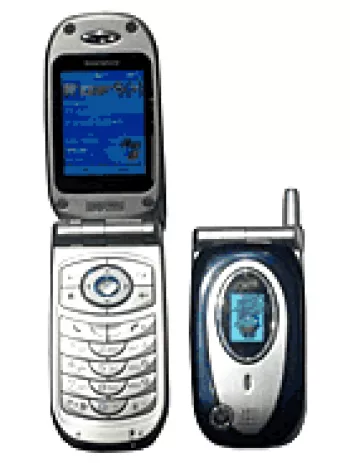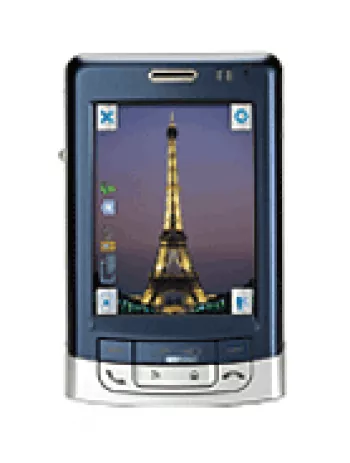
Overview of the Mitac MIO 8380
The Mitac MIO 8380 was an innovative and forward-thinking smartphone that was introduced to the market in the early 2000s. This device was one of the early adopters of integrating smartphone capabilities with compact size, setting a precedent for future developments in mobile technology. Though now discontinued, the MIO 8380 provides a fascinating look at the early stages of smartphone development, focusing on functionality, operability, and design tailored to meet the needs of its time.
Design and Build
Mitac's MIO 8380 was designed with practicality and portability in mind. With dimensions of 97 x 52 x 30 mm and a weight of 143 grams, the smartphone was compact enough for easy handling and carrying. Its design incorporated a Mini-SIM slot and featured a silver exterior, giving it a sleek and modern appearance for its time. This device was built robustly, with durability that reflected the cutting-edge technology it housed.
Display Specifications
The display of the MIO 8380 stood out as a significant feature. Boasting a 2.2-inch TFT screen capable of showing 65k colors, the display was vibrant and reasonably sharp with a resolution of 176 x 220 pixels. With a screen-to-body ratio of approximately 30.2%, the viewing experience was sufficiently immersive for users, given the time of its release.
Performance and Operating System
Powering the MIO 8380 was an Intel PXA255 processor clocked at 200 MHz, which was a robust choice back in 2003. This was paired with Microsoft Smartphone 2002 as the operating system, reflecting the collaboration between hardware and software aimed at maximizing user productivity. Despite having just 16MB of RAM, the device managed to handle the essential functions effectively, showcasing the efficient use of technology before the era of multi-gigabyte memory capacities.
Memory and Expansion
The internal storage of 32MB ROM plus 16MB RAM might seem quite limited today, but back in the era of early smartphones, this was quite standard. Crucially, the MIO 8380 came equipped with a card slot for MMC/SD, allowing users to expand storage capacity, which was a vital feature for users who needed more space for apps, contacts, and digital media.
Camera Capabilities
Fitted with a 0.1 MP single CIF camera, the MIO 8380 was not primarily intended as a replacement for standalone cameras. However, it offered basic photographic capabilities suitable for casual capture of moments. Though video recording was not available, the emergence of having a camera on a smartphone paved the way for future developments by emphasizing connectivity and convenience.
Network and Connectivity
Supporting GSM technology across 900/1800/1900 bands and GPRS, the MIO 8380 ensured dependable network connectivity for its users. While it lacked advanced features like Bluetooth or WLAN, it did cater to essential communication needs through its infrared port, which was standard at the time for data exchange between devices.
Sound and Audio Features
Audio features on the MIO 8380 included polyphonic ringtones with composer support, underscoring the era's evolving mobile sound capabilities. However, the absence of a 3.5mm jack and loudspeaker was quite noticeable, as this restricted the ability to use standard headphones or play audio without additional accessories.
Battery Life
Equipped with a removable Li-Po 1050 mAh battery, the MIO 8380 could sustain a stand-by time of up to 100 hours and a talk time of up to 3 hours. Such battery performance was fairly typical during the period, balancing device size with battery technology available at the time. The replaceable battery granted users the flexibility to carry spare batteries, which was a pragmatic feature for those on the go.
Additional Features
The MIO 8380 offered essential features that made it competitive in its market segment. With its WAP 2.0/xHTML browser, it provided basic internet browsing capabilities, enabling users to access online content with ease. Although modern connectivity standards were absent, the device still served its purpose well by maintaining seamless communication and basic web functionalities.
Conclusion
The Mitac MIO 8380 represents a significant moment in smartphone history. Its blend of design, functionality, and technology provided users in the early 2000s with a glimpse into the future of mobile devices. While many of its features appear primitive by today’s standards, the MIO 8380 was pioneering for its time, epitomizing both the potential and the limitations of early smartphone technology. This device laid the groundwork for future advancements and continues to be a fascinating subject of study for technology enthusiasts and historians alike.
Key Features of Mitac MIO 8380
- GSM tri-band technology (GSM 900 / 1800 / 1900)
- Compact dimensions: 97 x 52 x 30 mm
- TFT display with 65k colors
- 2.2-inch screen with a resolution of 176 x 220 pixels
- Powered by Microsoft Smartphone 2002 operating system
- Intel PXA255 200 MHz processor
- Expandable memory with MMC/SD card slot
- Infrared connectivity available
- Removable Li-Po 1050 mAh battery
- Stylish silver color
Disadvantages of Mitac MIO 8380
- No support for EDGE network technology, which limits data speed significantly.
- The device is discontinued, meaning no official support or available parts for repair.
- The weight of 143 g might feel bulky compared to modern lightweight smartphones.
- Display has a low resolution of 176 x 220 pixels and only 65k colors, which produces less sharp and vibrant visuals compared to contemporary displays.
- The processor is limited with only a 200 MHz single-core, which results in slower performance.
- Insufficient memory with only 16MB RAM and 32MB ROM, potentially causing limitations in running applications and storing data.
- Main camera only offers CIF resolution and does not support video recording.
- No front-facing (selfie) camera, which is a standard feature in current smartphones.
- Lacks a loudspeaker option; reliant only on vibration and ringtones for alerts.
- Absence of Bluetooth, WLAN, GPS, and radio functionalities, limiting connectivity and versatility.
- No 3.5mm audio jack, which was widely used for headphones and headsets at the time.
- Limited battery capacity with only up to 3 hours of talk time and 100 hours of standby time.

View Also
More Phones
All Rights Reserved +13666 Phones © Mobilawy 2025
























